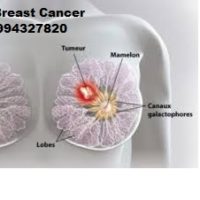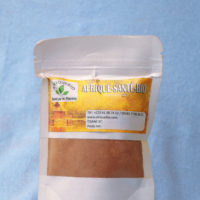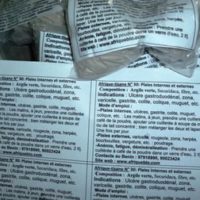Description
Natural Treatment Uterine Fibroids. Get ride of fibroids in short time.Thank to our natural remedy made with medicinal plants and leaves say goodbye to any kind of fibroid . In effect if you search one Natural Treatment Uterine Fibroids to shrink Fibroids Naturally., please to discover here plants can help you to shrink fibroids naturally. Good remedy
Please to join us
Shrink Fibroid 202 : Fibroids, How to shrink Fibroids Naturally
Shrink Fibroid 202 : Fibroids, How to shrink Fibroids Naturally
Description
herbal tea Shrink Fibroid 202 : Fibroids, How to shrink Fibroids Naturally is a good remedy for fibroids of the uterus, uterine myoma. It is made of herbs, leaves, fruits, bark, roots, seeds by calcination. This is one of the best recipes of the time to dry fibroids and myoma of the uterus in a short time.
The Shrink Fibroid 202 : Fibroids, How to shrink Fibroids Naturally dry uterine fibroids and myomas. The remedy for dry uterine fibroids. is a complex of medicinal plants, leaves, bark, roots to remove any form of benign tumor internal as fibroids of the uterus and uterine fibroids at any stage of the disease .
State and composition of the herbal tea to treat fibroids .
This is a good herbal remedy medicinal plants well studied for internal tumors. It is a black powder obtained by calcination. In fact it treats all forms of internal tumors and especially large fibroids. For large fibroids, combine herbal teas 10, 111, 202 and 203 to optimize the total destruction of large fibroids. Myomas are swept in a month of treatment. Do not miss this unique opportunity you.
– An ultrasound is required at the beginning and end of treatment ..
Technical sheet
| compositions | Roots, bark, leaves, |
| properties | Absorbent, purifying |
| Active subtances | -Tanins astringent and absorbent |
| Presentation | Black powder or bark and roots bottle |
| Manual | Read leaflet |
| Side effects | Nothing special |
| Duration of treatment | A month with 2 tea pots |
| Price | 100 euros |
LEARN MORE
Presentation
black -Powder bag of 100 g or 100 g pot
Composition
Extract from plants.
Active subtances
-Tanins astringent and absorbent, anti-inflammatory and anti-fibrinolytic glycosides activated charcoal etc.
Price: 100 €
The therapeutic effects of the powder
Potion absorbs slowly and surely all internal benign tumors. The first effects are felt very quickly and it encourages you to further processing.
indications
Fibroids, uterine myoma
Side effects
Manual :Read leaflet
Please visithttps://www.ewebio.com
NB: Shrink Fibroid 202 : Fibroids, How to shrink Fibroids Naturally is a good remedy herbal, leaves, fruits, bark, roots, seeds to eliminate any kind of internal tumors. This is one of the best recipes of the moment to treat internal tumors.
NB: Good remedy for dry fibroids of the uterus, uterine fibroids quickly. Valid for big fibromes.Découvrez the remedy.. The 202 Remedy: Herbal tea to dry Fibroids Fibroids quickly and is a good remedy herbal, leaves, fruits, bark, roots, seeds to eliminate any kind of internal tumors. This is one of the best recipes of the moment to treat internal tumors.
More also fibroids Fibroids and dry in a month is the role of this tea. The polymyomatous uterus will be quickly rid of large fibroids or myomas.
How to Treat Uterine Fibroids Yourself
We include products we think are useful for our readers. If you buy through links on this page, we may earn a small commission. Here’s our process.
What are uterine fibroids?
Uterine fibroids are growths in your uterus. Between 60 and 80 percent of women have or have had fibroids. They’re also called:
- benign tumors
- uterine leiomyomas
- myomas
While fibroids aren’t cancerous or life-threatening, they can sometimes cause health problems.
Fibroids range in size to as small as a seed to larger than a grapefruit. You can have one fibroid or multiple growths.
Support and development as well as Natural Treatment Uterine Fibroids
You may not have any symptoms at all. Most women don’t know they have this condition.
Signs and symptoms depend on the size, location, and number of fibroids. You may experience:
- periods that last longer than a week
- heavy menstrual bleeding
- spotting or bleeding between periods
- pelvic pressure or pain
- backache or leg pain
- frequent urination
- difficulty emptying your bladder
- constipation
- difficulty getting pregnant
Fibroids can grow in any part of your uterus. They are named by where they grow:
- intramural fibroids grow inside the uterus walls
- submucosal fibroids grow into the hollow cavity of your uterus
- subserosal fibroids grow out of the surface of your uterus
Natural treatment of fibroids
Fibroids typically grow slowly or not at all. In many cases, they shrink on their own, especially after menopause. You may not need treatment unless you’re bothered by symptoms. Your doctor will recommend the best treatment plan. You may need a combination of therapies.
In moderate to severe cases where symptoms are bothersome, worsening, or not improved with medication, fibroids may be treated with surgery or ultrasound therapy. Surgery may involve removing just the fibroids or your entire uterus.
At-home care, diet changes, and natural remedies may help treat fibroids and relieve symptoms. The lifestyle changes below are also important in the prevention of fibroids.
These natural treatments may or may not help your fibroid symptoms, since relief depends on how severe your symptoms are and how your fibroids have progressed. You should speak with your doctor before trying any of these options.
Weight loss
A clinical study in China showed that obesity and excess weight increased the risk for uterine fibroids. This happens because fat cells make high amounts of estrogen. Losing weight may help prevent or reduce the size of fibroids.
Nutrition
Your daily diet is a very important factor in treating fibroids. The right nutrition can help you maintain a healthy weight and reduce your risk. Certain foods can also help ease symptoms.
Foods to avoid
According to clinical studies, eating too much red meat increases your risk of uterine fibroids. Drinking alcohol also increases your risk.
Eating excess refined carbohydrates and sugary foods may trigger or worsen fibroids. These foods raise blood sugar levels. This causes your body to produce too much insulin hormone. Avoid or restrict simple refined carbohydrates like:
- white rice, pasta, and flour
- soda and other sugary drinks
- corn syrup
- boxed cereals
- baked goods (cakes, cookies, doughnuts)
- potato chips
- crackers
Foods to eat
Fiber-rich unprocessed foods help:
- curb your appetite
- balance hormones
- prevent excess weight gain
Brightly colored foods such as fruits and vegetables also help reduce inflammation and lower your risk for fibroids. Add these whole foods to your daily diet:
- raw and cooked vegetables and fruit
- dried fruit
- whole grains
- brown rice
- lentils and beans
- whole grain bread and pasta
- quinoa
- fresh and dried herbs
Vitamins and supplements Natural Treatment Uterine Fibroids
Milk and dairy may help to reduce fibroids. Dairy products contain high amounts of calcium, magnesium, and phosphorus. These nutrients may help prevent growth of fibroids.
Some types of vitamins may also help reduce the growth and size of fibroids. Research confirms that your risk for fibroids may increase if you have low amounts of vitamin D and vitamin A from animal sources, such as dairy.
Uterine fibroids may worsen menstrual pain, bloating, and cramping. A number of vitamins may help ease these symptoms:
- vitamin B-1
- magnesium
- omega-3 fatty acids
You can find these vitamins in food as well as supplements. If you want to start incorporating supplements into your daily routine, talk with your doctor before you begin.
Blood pressure
A Dutch study found that there may be a link between high blood pressure and fibroids. Manage your blood pressure to help reduce your risk and improve your overall health:
- Limit foods with added salt or sodium.
- Check your blood pressure regularly and discuss readings with your doctor.
- Get regular exercise.
Herbal remedies
Herbal remedies may help to treat fibroids or reduce related symptoms. Further research is needed to find out if these remedies work and what the most effective dosage is.
would you like to Remedy to Remove your Fibroids? Please join the doctor hier .
Herbs are potent medicines and can interact with other drugs. They’re also not regulated by the U.S. Food and Drug Administration. Talk with your doctor before taking herbal medicine.
Tea Natural Treatment Uterine Fibroids
A bioflavonoid in green tea called EGCG may help reduce the size and number of fibroids. This may be due to its ability to reduce inflammation and remove toxins from your body.
Fibrous herbs such as isphagula and senna are used as natural laxatives. Add these herbs to water or juice to help relieve constipation.
Castor oil is an herbal oil that can be taken as a supplement to help occasional constipation.
Other remediesAt-home care may help to manage stress, which can worsen fibroids and your overall health. Try these treatment options that can help manage stress:
- warm compresses or applying local heat
- warm baths
- yoga and exercise
- massage therapy
In most cases, symptomatic fibroids are treated with hormonal medications, ultrasound therapy, surgery, and other treatment. Medications help to shrink fibroids or ease symptoms. Surgery may involve removing just the fibroids or your entire uterus.
Some treatments your doctor may recommend include:
- hormone balancing medications
- progestin-releasing intrauterine device
- MRI-guided focused ultrasound surgery
- uterine artery embolization, which works by blocking blood supply to the fibroids and uterus
- myolysis, which is removal with a heat source (such as radiofrequency waves); Acessa is an example of this procedure
- cryomyolysis, which removes fibroids by freezing
- myomectomy, which is surgery to remove just fibroids
- hysterectomy, which surgically removes your uterus
would you like to Remedy to Remove your Fibroids? Please join the doctor hier .
Please join the doctor immedialy to take more explication +22960081765









Commentaires récents